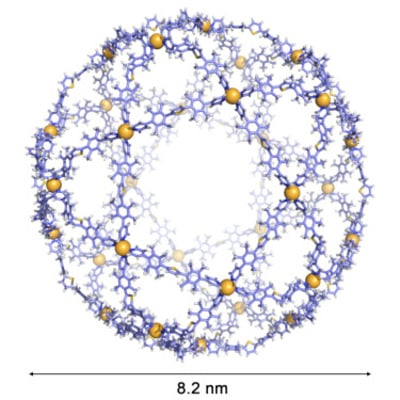Share this
Authors
Daishi Fujita, Yoshihiro Ueda, Sota Sato, Hiroyuki Yokoyama, Nobuhiro Mizuno, Takashi Kumasaka, Makoto Fujita
Abstract
Self-assembly is invaluable in the construction of giant molecular structures via a bottom-up approach. Although living organisms naturally make the most use of self-assembly and freely handle the mechanism at will, scientists are still far behind the level of nature. Inspired by the elegant structures of virus capsids, we have previously constructed roughly spherical giant metal complexes with the symmetry of an octahedron, cuboctahedron, and rhombicuboctahedron with the compositions M6L12, M12L24, and M24L48, respectively. Here, we report our first successful synthesis of an M30L60molecular icosidodecahedron that consists of ∼100 components: 30 Pd(II) ions and 60 ligands that assemble into the largest well-defined spherical macromolecule to date (diameter of ∼8.2 nm). Tuning the flexibility of the ligand was the key for successful self-assembly. A highly complex but symmetrically organized structure was identified through X-ray crystallographic analysis. The interior space of the molecular complex is large enough (157,000 Å3) to enclose proteins.

Chem URL: http://www.cell.com/chem/fulltext/S2451-9294(16)30011-0
These Related Stories